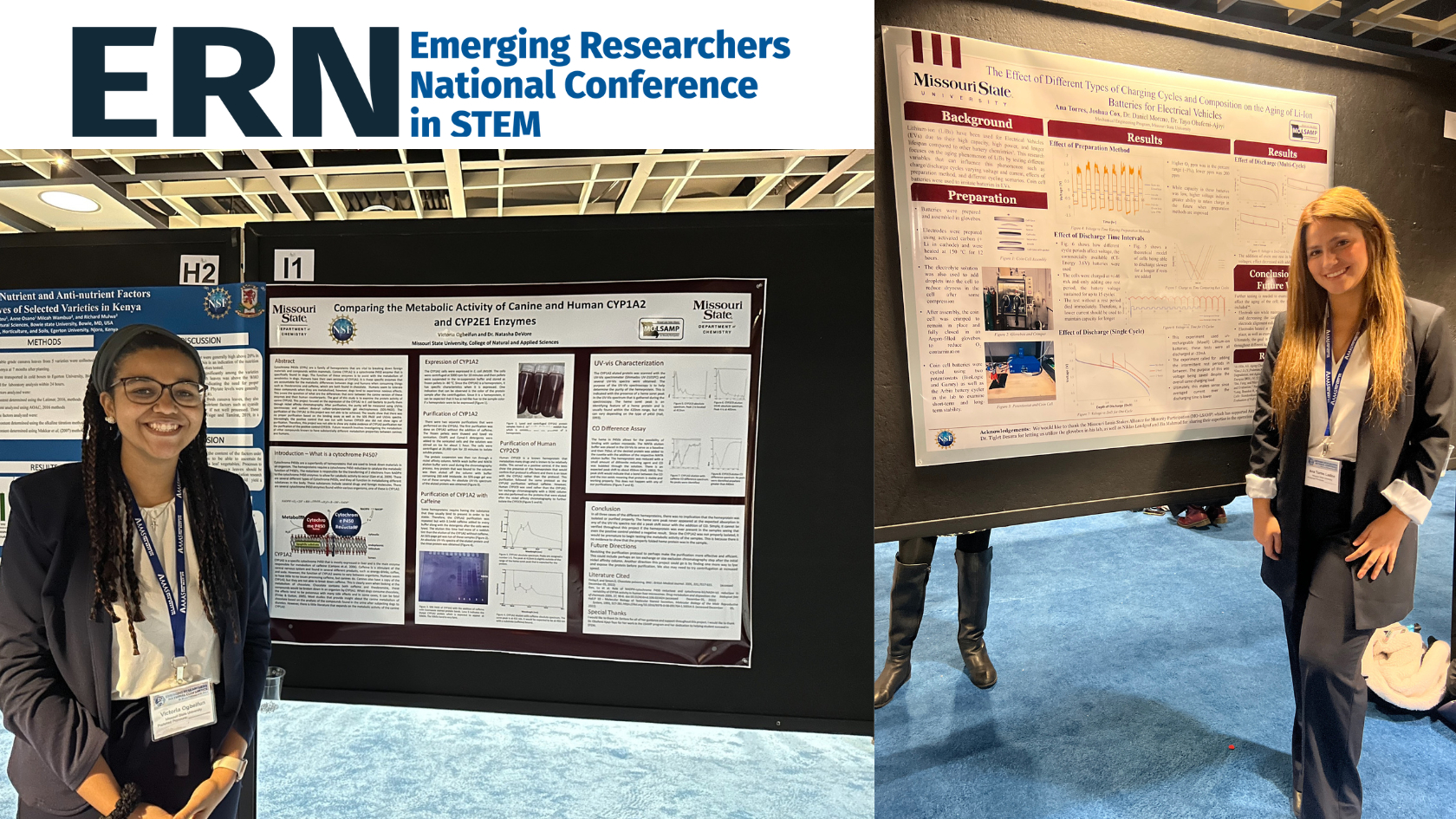The Emerging Researchers National (ERN) Conference in science, technology, engineering and mathematics (STEM) is a big one.
It’s hosted by many big names in science, including the American Association for the Advancement of Science (AAAS), Inclusive STEM Ecosystems for Equity & Diversity (ISEED) programs and the National Science Foundation (NSF) Division of Human Resource Development (HRD).
Three MSU students in the biology, chemistry and engineering disciplines got to attend this conference and present their research in Washington, D.C., from Feb. 9-11.
Ana Torres
A senior mechanical engineering major from Bogota, Colombia, Ana Torres dives deep into the aging processes of lithium-ion batteries.
Her project is a brilliant group effort alongside associate professor of engineering Dr. Tayo Obafemi-Ayaji and assistant professor of engineering Dr. Daniel Moreno-German.
“Our research includes the study of how charge and discharge cycles affect aging of lithium-ion batteries,” Torres said. “We also study how different variables, such as temperature, current, voltage cut-off, cycle times and chemistries affect the aging of the batteries.”
To study lithium-ion batteries, Torres doesn’t just go and buy some. She makes them herself.
“We assemble the lithium-ion batteries in Kemper Hall,” she said. “We do this by making our own electrodes and electrolyte solution, and then we assemble the batteries in a glovebox to reduce oxygen contamination. After we build the batteries, we test them and analyze the results.”
The preparation process of the electrodes proves to be long but worth it.
“The (preparation process) takes about 12 hours, with the assembly and additional preparation taking an extra three hours,” Torres said. “The testing of these coin cell batteries usually takes around 20 hours but can vary. In total, this process takes 35 hours.”
Torres has made a lasting impression on her professors.
“I’ve had the privilege of having Ana in two of my classes where she excelled and was very engaged in the work,” Moreno said. “She has a strong work ethic and has demonstrated initiative in learning about Li-ion batteries and conducting experiments to understand the effects of aging.”
Maximo Reyes
A senior chemistry major and geology minor from Waynesville, Missouri, Maximo Reyes’ research interests lie in analytical and environmental chemistry.
At the conference, Reyes presented his research on the effects of contaminants on plants.
“Our work aims to study how emerging contaminants affect plants’ physical and physiological properties,” Reyes said. “Specifically, the project I most closely worked on involved studying the effects that generational exposure to cerium oxide nanoparticles and PFOS had on wheat plants. Our data showed very subtle differences through a variety of biochemical assays and physical properties of the plants.”
Reyes is continuing research with different projects.
“Now that the findings of this project are currently in the publishing process, we’ve moved on to other projects, like studying the effects of nano plastics on plants.”
Graduating this spring, Reyes has his eyes on a doctorate degree.
“I’m currently in the process of applying to PhD programs and, so far, have been accepted into two of the three of the programs I applied to.”
Reyes is advised by Dr. Cyren Rico, assistant professor of chemistry and biochemistry.
Victoria Ogbeifun
From Republic, Missouri, Victoria is studying chemistry and microbiology on a pre-med track.
She works in Dr. Natasha DeVore’s lab conducting research on a type of canine protein.
“My research focuses on canine cytochrome P450s CYP1A2,” Ogbeifun said. “This is a heme protein that is responsible for the metabolism of caffeine.”
Heme proteins are precursors to the protein hemoglobin. Hemoglobin helps blood to transport oxygen throughout the body.
But not just canines have this protein. We humans do, too.
“Humans and canines both have copies of CYP1A2, yet humans can metabolize caffeine while canines cannot,” Ogbeifun said. “So, the question is, ‘What is the difference between these two proteins on the cellular level?’”
Cytochromes can be high maintenance.
“Since cytochromes tend to be hard to purify, my project mostly focused on expressing and purifying the ones I’m researching,” Ogbeifun said. “I continue to look forward to working with Dr. DeVore to learn new skills, further my understanding of lab techniques and shift to another project once this one is complete.”
Dr. DeVore’s guidance has been key to Ogbeifun’s recent strides.
“Dr. DeVore is an awesome mentor and always encourages me to take chances and try my best,” Ogbeifun said. “She was pivotal in my decision to submit an abstract for this conference and I couldn’t have done it without her.”
Victoria started research in the lab this past fall semester.
“She’s one of three undergrads currently in the lab doing excellent research,” Dr. DeVore, assistant professor of chemistry and biochemistry, said. “Participating in research is such an important part of our chemistry major, and Victoria being able to present at this conference was a great opportunity to engage with the larger scientific community.”
After graduation, Ogbeifun plans to pursue medical school and become a surgeon.
Discover more from CNAS NewsWatch
Subscribe to get the latest posts sent to your email.

